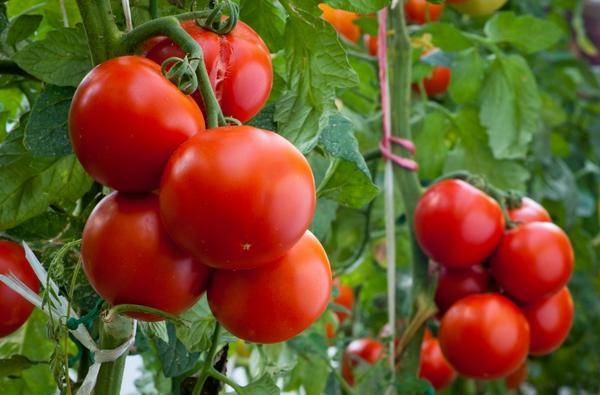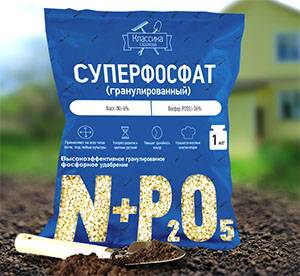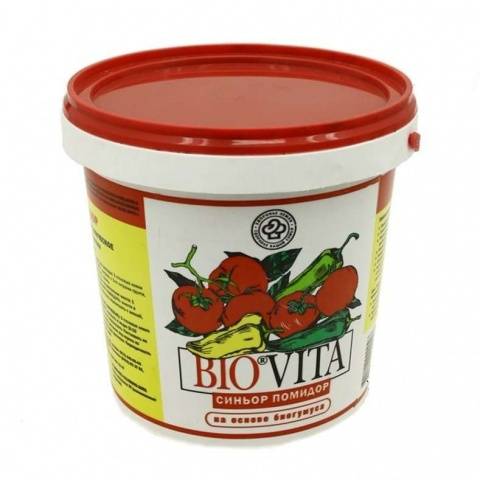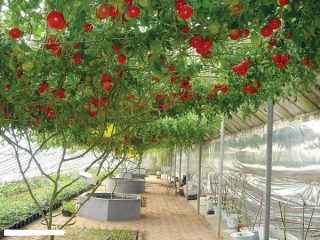Content
Every farmer who has at least once grown tomatoes on his plot knows that without applying fertilizers it will not be possible to obtain a high-quality harvest of vegetables. Tomatoes are very picky about the composition of the soil. At all stages of cultivation, they need various minerals, which will affect the growth of the bush, the filling and taste of the fruit, and the speed of their ripening. In this case, it will not be possible to get by only with organic fertilizers, since they only contain nitrogen in sufficient quantities. That is why experienced farmers use mineral fertilizers for tomatoes, which are able to provide the plants with all the necessary microelements. You can prepare mineral supplements yourself by mixing several preparations With different compositions or purchase ready-made mixtures. Also highly effective are organomineral fertilizers, which are a mixture organic and minerals. We will talk in detail about the use of all these fertilizers in the proposed article.
Mineral fertilizers for tomatoes
For normal development and tomato growth The soil must contain a whole complex of various minerals, including calcium, boron, magnesium, manganese, zinc, sulfur and others. However, the most important constituents are only three minerals: nitrogen, potassium and phosphorus. It is these that tomatoes consume in large quantities at one or another stage of the growing season, which can lead to a deficiency of these substances and disruption of plant development.
Complex mineral fertilizers contain in balanced quantities not only basic, but also additional substances. Simple mineral supplements contain only one major microelement, so they are used either in mixture with each other or to prevent deficiency of a specific mineral.
Simple mineral fertilizers
Simple mineral fertilizers have a relatively low cost. Another advantage is the ability of the farmer to independently regulate the amount of certain substances in the fertilizer.
All simple mineral fertilizers, depending on the main microelement, can be divided into three types:
- Nitrogen. They are used to accelerate the growth of plant leaves and shoots. Such exposure is extremely necessary at the early stage of tomato growing season. Nitrogen fertilizers actively used to feed seedlings and plants in the soil before flowering begins, then the amount of nitrogen in the soil must be reduced, which will allow its forces to be directed not to the growth of green mass, but to the formation of fruits. Among nitrogen one-component mineral substances, the most popular are urea (urea) and ammonium nitrate. To prepare one-component urea fertilizers add 1 tbsp. l. substances in 10 liters of water.
- Phosphorus. Phosphorus is essential for tomatoes for the growth and development of the root system.This microelement is especially in demand during the period of growing seedlings, picking plants and planting them in the ground. Simple phosphorus fertilizers are presented superphosphate. The peculiarity of simple phosphorus fertilizer is that it is poorly soluble in water, and in dry form it is not absorbed by plants. When preparing fertilizer, it is necessary to take this feature into account and prepare a superphosphate solution a day before use. This “aged” solution is called an extract. To prepare it, add 1 tbsp to 1 liter of boiling water. l. superphosphate. After infusing the mixture for 24 hours, the working solution is diluted in 10 liters of water.
- Potash. Fertilizers containing potassium have a beneficial effect on the development of the root system, increase the immunity of tomatoes and improve the taste of vegetables. Potassium is added to the soil at various stages of crop cultivation. It is recommended to use potassium salts that do not contain chlorine, since it negatively affects the growth of tomatoes. For example, potassium chloride can be added to the soil only in the fall, so that the chlorine is washed out of the soil. The optimal potassium fertilizer for tomatoes is potassium. You can prepare a fertilizer from this substance by adding 40 g of potassium sulfate to 10 liters of water. This solution should be enough to feed 1 m2 of tomatoes.2 soil.
The given fertilizers are used to feed seedlings or already mature plants, and for young tomatoes, it is recommended to slightly reduce the concentration of substances in relation to the proportions suggested above. For a comprehensive feeding tomatoes you can prepare a mixture of two or three simple substances.
Ready-made complex fertilizers
Most ready-made mineral complexes contain mixtures of the simple substances listed above. A balanced amount of ingredients allows the farmer not to think about what proportions to maintain when preparing fertilizer.
Among the most effective and affordable complex fertilizers with minerals for tomatoes are:
- Diammofoska. This fertilizer is unique in its expanded, multicomponent composition. It contains a large amount of phosphorus and potassium (about 26%), as well as nitrogen (10%). In addition, the supplement contains various additional micro- and macroelements. A significant advantage of the fertilizer is its easily soluble form, which greatly facilitates the use of the substance. Diammofoska can be added to the soil during digging as the main micronutrient. The application rate in this case is 30-40 g per 1 m2 soil. To water tomatoes at the root, the complex preparation is dissolved at the rate of 1-2 teaspoons per bucket of water. Plants are watered with a working solution to a depth of 1 m2 soil.
- Ammophos. This two-component fertilizer contains about 50% phosphorus and just over 10% nitrogen. Granular fertilizer does not contain chlorine and promotes the development of the root system of tomatoes and the rapid ripening of vegetables. To feed tomatoes, the substance can be applied dry to the furrows on the beds with landings or in the form of a solution for watering at the root. It is important to note that dry Ammophos is applied to the soil at a distance of no closer than 10 cm from the plant trunk.
- Nitroammofoska is a three-component substance in the form of gray granules. The fertilizer contains the main microelements in equal proportions, approximately 16%.Nitroammophoska is highly soluble in water and has a highly effective effect on various vegetable crops. So, when feeding with this fertilizer, you can increase the yield of tomatoes by 30, and sometimes by 70%. Apply Nitroammophoska It is possible when digging dry soil or for root feeding of tomatoes during the growing process. The fertilizing rate is 30-40 g/m2.
When using the listed types of complex mineral supplements, it is necessary to take into account the nature of the substances’ origin. Thus, Ammophos and Diammofoska belong to the category of nitrate-free drugs, which is their important advantage. Nitroammofoska contains nitrates in its composition, which can accumulate in tomatoes. If the application rate of this fertilizer is exceeded, the environmental friendliness of vegetables can significantly deteriorate.
An overview of other mineral fertilizers and advice from a professional farmer can be seen in the video:
The video also notes symptoms of deficiency of specific minerals and ways to solve the problem using various mineral root and foliar fertilizers.
General rules for the use of mineral fertilizers
Mineral fertilization of tomatoes should be carried out in compliance with certain rules:
- During the formation of flowers, ovaries, and fruits, mineral preparations should not be used as foliar feeding. This can lead to intoxication of the fruit and poisoning of humans when consuming such tomatoes.
- All mineral fertilizers must be stored in sealed bags.
- Excessive concentrations of mineral fertilizers negatively affect the growth and fruiting process of tomatoes and can lead to fattening of tomatoes or their “burning”.
- The amount of minerals can be adjusted depending on the composition and existing soil fertility. So, on clay soils the amount of fertilizer can be increased, and on sandy soils it can be reduced.
- You can use mineral fertilizers in dry form only with regular, abundant watering. It is necessary to embed the substances to the depth of the tomato roots.
Guided by these simple rules for using mineral fertilizers, you can improve the process of growing crops and increase productivity without causing damage to the quality of tomatoes.
Organomineral fertilizers
This type of fertilizer is a relative novelty on the market, however, over time, organomineral substances are becoming increasingly popular. They are a mixture of organic matter, such as slurry or infusion chicken manure, with simple minerals.
The advantages of organomineral fertilizers are:
- environmental Safety;
- the ability to be quickly absorbed by plants and provide the desired effect in a short time;
- the opportunity to significantly improve the composition of the soil before and after planting tomatoes.
Organomineral fertilizers can be found on sale in various forms: in the form of solutions, granules, dry mixtures. The most popular organomineral fertilizers for tomatoes are:
- Humates are a natural substance in the form of an extract from peat, manure, and sludge. Potassium and sodium humates can be found on sale. These tomato fertilizers contain not only the main substance indicated in the name, but also a full range of minerals, including nitrogen, potassium and phosphorus.The composition also contains humic acid and a number of beneficial bacteria that improve the quality and fertility of the soil, warm the roots of plants, and accelerate their growth. By using Humates, you can significantly increase the yield of tomatoes without compromising the environmental friendliness of the fruit. The organomineral preparation can be safely used at various stages of the tomato growing season. Seeds are soaked in Humate solution, seedlings and adult plants in the beds are watered with it. To carry out root feeding and leaf feeding, prepare a Humate solution of 1 tbsp. l. on a bucket of water.
- BIO VITA. Among the organomineral fertilizers of this brand, “Senior Tomato” can be used to feed tomatoes. In addition to organic extracts, this fertilizer contains a complex of minerals: nitrogen, potassium and phosphorus in clearly balanced quantities. The use of this fertilizer has a beneficial effect on the formation of ovaries and improves the taste of tomatoes. At the same time, receiving a large amount of potassium and a limited amount of nitrogen, the plants do not allow themselves to fatten and direct their energies to increasing productivity. That is why the organomineral preparation of this brand is effective when used in the second half of the cultivation period. For root feeding, the organomineral complex is added in the amount of 5 tbsp. l. on a bucket of water.
- Baby. Organomineral fertilizer “Malyshok” is used to feed seedlings and already grown tomatoes in the soil after planting. This drug allows you to increase the stress resistance of plants, prepare them for transplantation and improve the development of the root system. You can soak tomato seeds in the solution of the drug, accelerating the process of germination and increasing germination.You can prepare a fertilizer based on this drug by adding 100 ml of substances to a bucket of water.
The use of these drugs is absolutely safe for plants. With the help of organomineral complexes, you can carry out not only root, but also foliar feeding. A properly selected composition of fertilizers can increase the yield of tomatoes, accelerate the development of their root system, and improve the taste of vegetables.
Scheme for using mineral fertilizers
It is impossible to unjustifiably repeatedly apply mineral fertilizers to the soil when growing tomatoes. It is necessary to use mineral fertilizers only when necessary, when there is a deficiency of a certain microelement, or as planned, in compliance with a certain schedule. Thus, the recommended scheme for feeding tomatoes includes the following steps:
- Tomato seedlings are fed after 2-3 leaves appear. During this period, it is necessary to feed tomatoes with a complex preparation, for example, Nitroammophoska or organomineral fertilizer “Malyshok”.
- The seedlings are fed with phosphorus and potassium fertilizers a week before the planned planting of the plants in the soil.
- The first feeding of tomatoes in the ground can be done 10 days after planting the plants in the soil. At this stage, you can use nitrogen-containing fertilizers to actively grow tomato leaves. The frequency of applying such fertilizing should be once every 10 days.
- When flowering clusters and ovaries appear, it is recommended to focus on the use of potassium fertilizers with a small amount of nitrogen and phosphorus.Such complex fertilizing must be repeated until the end of the vegetative period of plants.
If the soil on which tomatoes grow is depleted, you may encounter symptoms of a deficiency of one or another mineral. In this case, it is recommended to use simple mineral fertilizers as foliar feeding. The procedure of spraying leaves with nutrient solutions will correct the starvation situation and soon saturate the plants with the necessary trace elements.
Conclusion
It is impossible to obtain a high-quality tomato harvest without the use of mineral fertilizers even on the most fertile soil. Plants regularly consume substances as they grow, depleting existing soil resources. That is why fertilizing should be regular and comprehensive. At the same time, it is important to monitor the concentration of substances and methods of applying mineral fertilizers depending on the growing season of tomatoes. Only properly fed tomatoes can thank the farmer with tasty and healthy vegetables in large quantities.























